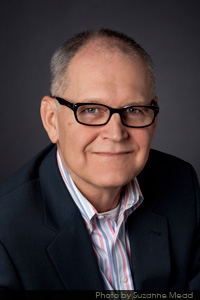Submitted by Wendell Potter on
Dr. Bruce Kinosian still makes house calls, and he's proud of it. In fact, he introduces himself as a physician who goes to see his patients in their homes rather than insisting that they come to see him at his office.
 He's convinced that if more doctors did what he does, we could eliminate billions of dollars we currently spend in this country in an often-futile -- and almost always incredibly expensive -- effort to get people well.
He's convinced that if more doctors did what he does, we could eliminate billions of dollars we currently spend in this country in an often-futile -- and almost always incredibly expensive -- effort to get people well.
Much of that savings, he says, would accrue to the Medicare program, making it unnecessary for Congress to even consider eliminating benefits or raising the eligibility age.
Kinosian, associate professor of medicine at the Hospital of the University of Pennsylvania in Philadelphia, is a leading advocate of the Independence at Home (IAH) program, which quietly has been saving the Department of Veteran's Affairs (and taxpayers) lots of money -- and improving the quality of life for thousands of veterans -- for nearly three decades.
The IAH health care delivery model is designed to focus on the growing number of people with high-cost, multiple chronic conditions. It not only provides primary care to these patients in their homes, but it also coordinates their care when they have to go to the hospital or nursing home.
A Health Care Delivery Model that Works to Cut Costs
The VA's IAH program, which has grown over the years to serve veterans in almost every state, has compiled enough statistics by now to demonstrate that this approach to care really works. An analysis of data from a 2002 VA study of more than 11,000 patients showed that after veterans were moved to an IAH program that year, hospital days dropped by 62 percent and nursing home days by 88 percent. Overall costs fell by 24 percent. As spending went down, patient satisfaction went up. The VA says veterans consistently give the program a high satisfaction rating, no doubt in part because patients enrolled in the program are living longer than their counterparts who are not.
In a typical IAH program, a team of providers, including doctors, nurses, social workers, pharmacists and other caregivers, works together to deliver comprehensive, coordinated primary care to patients where they live. A growing body of evidence shows that because of this enhanced coordination of care, IAH programs have helped patients avoid trips to the emergency room, hospitalizations, and moves to nursing homes.
So impressive have the results been within the VA, and in a number of other IAH-type programs, that Congress included funding in the health care reform law for a new demonstration project that will target the high risk, high-cost Medicare beneficiaries with multiple chronic conditions. This Independence at Home demonstration program, scheduled to begin January 1, 2012, will serve up to 10,000 Medicare beneficiaries.
The idea to include the demonstration project in the reform law grew out of a separate piece of legislation, called the Independence at Home Act, that had been introduced by Reps. Ed Markey (D-Mass.) and Chris Smith (R-N.J.) in the House and Sens. Ron Wyden (D-Ore.) and Richard Burr (R-N.C.) in the Senate. The IAH Act was one of the few health reform measures that attracted broad bipartisan sponsorship. That's why lawmakers added it to the Affordable Act as it was working its way through Congress.
Markey and Wyden sent a letter to the Center for Medicare and Medicaid Services in late June to ask that the demonstration project be expedited. CMS responded that it would try to get the project up and running this year rather than next, with CMS Administrator Don Berwick commenting that, "Given the number of Medicare and Medicaid beneficiaries with multiple chronic conditions, focusing on the integration and coordination of care for this population is critical to achieve better care and health for beneficiaries, and lower costs through greater efficiency and quality."
Planning Now to Solve a Growing Expense
 Expediting the project should be a no-brainer. According to the Congressional Budget Office (CBO), five percent of Medicare beneficiaries account for more than 43 percent of costs, and 25 percent account for 85 percent of Medicare costs. Not surprisingly, the CBO found that the highest cost beneficiaries were those with multiple chronic diseases. A separate study by Johns Hopkins University estimated that 98 percent of Medicare expenditures involve beneficiaries with multiple chronic conditions.
Expediting the project should be a no-brainer. According to the Congressional Budget Office (CBO), five percent of Medicare beneficiaries account for more than 43 percent of costs, and 25 percent account for 85 percent of Medicare costs. Not surprisingly, the CBO found that the highest cost beneficiaries were those with multiple chronic diseases. A separate study by Johns Hopkins University estimated that 98 percent of Medicare expenditures involve beneficiaries with multiple chronic conditions.
While the costs of caring for people with multiple chronic diseases are high now, they will be astronomical in the future. According to that same Hopkins study, the number of Americans with one or more chronic diseases will reach 157 million by 2020 -- up from 145 million in 2009 -- and almost half of them will have multiple chronic diseases.
With numbers like that facing us, we clearly need more doctors like Bruce Kinosian who see the wisdom of going back to the future to deliver care in the setting that makes the most economic and humane sense -- the home.
